
Among the many hidden files that are generated by Windows, the objects thumbs.db are highlighted. Let's find out which functions they perform, and that you need to do with it.
Using thumbs.db.
Thumbs.db objects cannot be seen in the usual mode of operation of Windows, since these files are hidden by default. In earlier versions, they are located almost in any directory where there are pictures. In modern versions for storing files of this type, there is a separate directory in each profile. Let's deal with what it is connected with and for which these objects are needed. Do they represent the danger to the system?Description
Thumbs.db is a system element in which the cached patterns are stored for previewing the following formats: PNG, JPEG, HTML, PDF, TIFF, BMP and GIF. The sketch is generated when the user is first browsing the user to a file, which in its structure corresponds to the JPEG format, regardless of the source format. In the future, this file uses the operating system to implement the image miniature viewer using the conductor, as in the picture below.
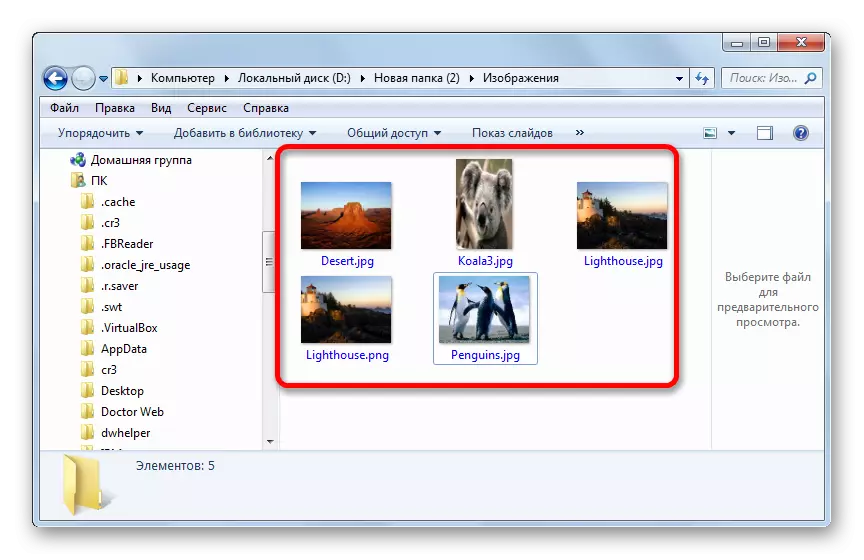
Thanks to this technology, OS does not need to compress images to form a miniature every time, thereby spending system resources. Now, for these needs, the computer will turn to an element in which the thumbnails of the pictures are already located.
Despite the fact that the file has a DB (database attribute), but, in fact, it is a COM storage.
How to see thumbs.db.
As mentioned above, it is impossible to see the objects we studied by default, as they have not only the attribute "hidden", but also "systemic". But the visibility to include them still can be.
- Open Windows Explorer. Located in any directory, click on the service item. Then select "Folder Settings ...".
- The directory parameters window starts. Move to the section "View".
- After the View tab opens, go to the "Advanced Settings" area. In its bottom there is a block "hidden files and folders". It requires a switch to the "Show hidden files, folders and discs" position. Also near the "Hide Protected System Files" parameter, you must remove the checkbox. After the indicated manipulations are carried out, press "OK".
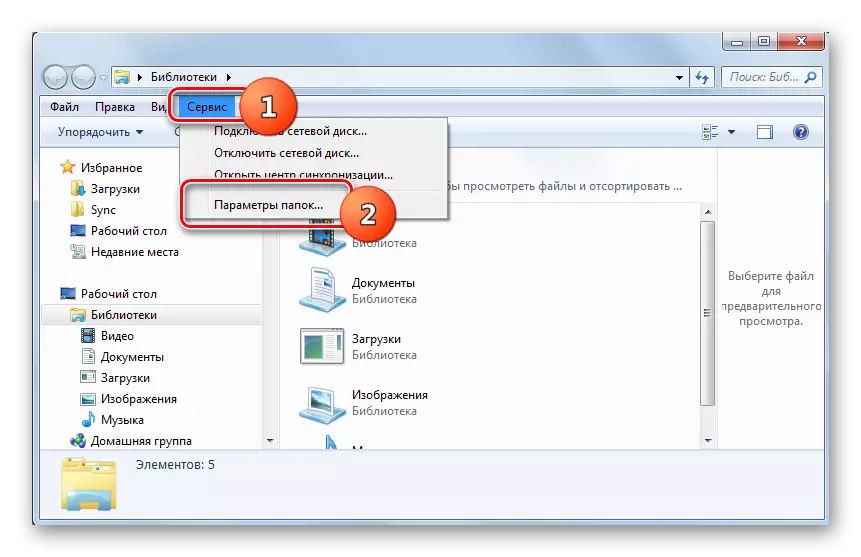
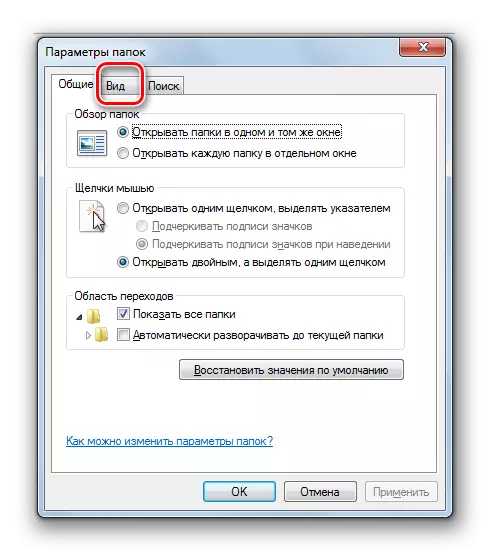
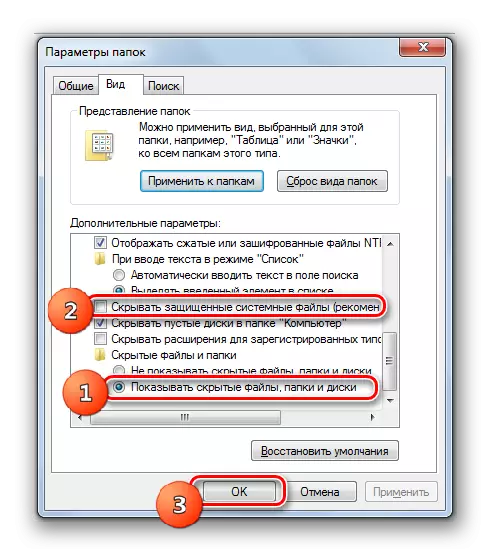
Now all hidden and system elements will be displayed in the conductor.
Where it is located thumbs.db.
But to see objects thumbs.db, you must first find out which directories they are located.
In OS to Windows Vista, they were located in the same folder where the corresponding pictures were located. Thus, in almost every catalog in which there were pictures, there was its thumbs.db. But in OS, starting with Wist Winds, a separate directory for each account was allocated to storing cached images. It is located at the following address:
C: \ Users \ Name_Rofil \ APPDATA \ LOCAL \ Microsoft \ Windows \ Explorer
To transition instead of the value "PRIFILE" value, it is necessary to substitute the specific username of the system. This directory contains the files of the group thumbcache_xxxx.db. They are the analogues of objects thumbs.db, which in earlier versions of the OS were placed in all folders where there were pictures.
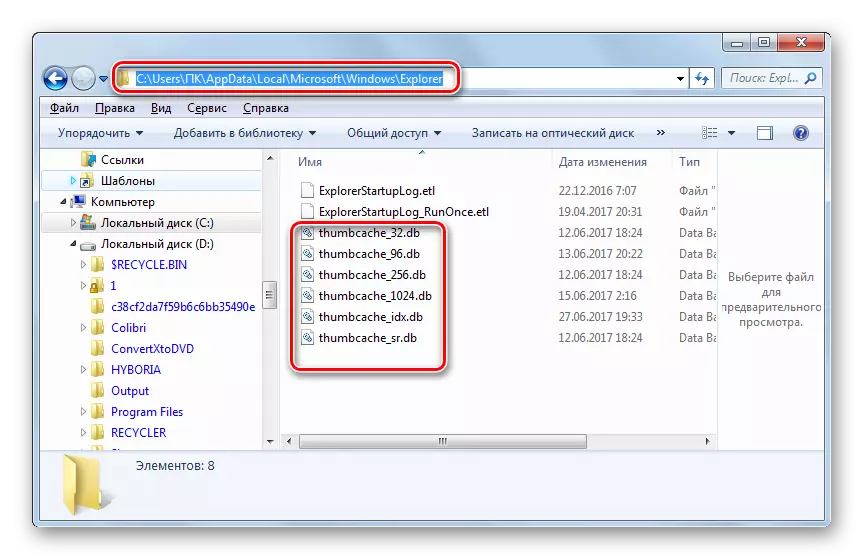
At the same time, if the computer was previously installed Windows XP, there could be thumbs.db in folders, even if you now use a more modern version of the OS.
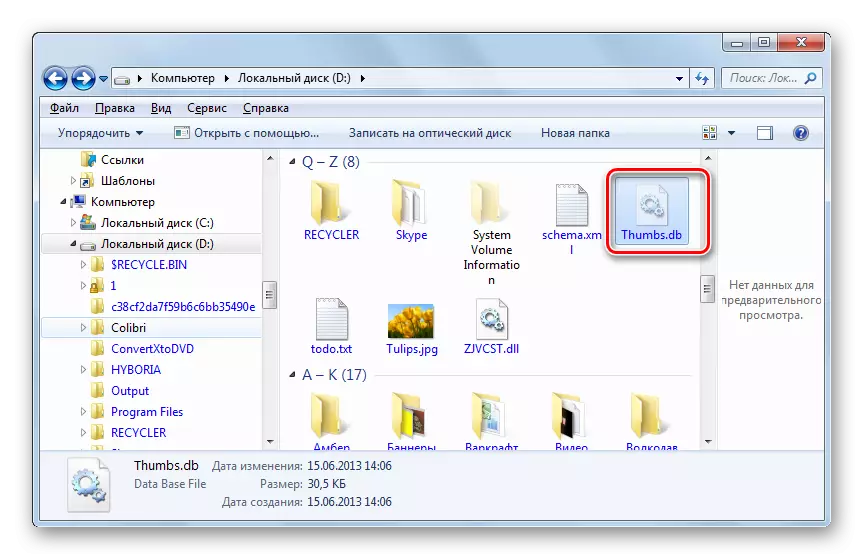
Removal thumbs.db.
If you are worried that thumbs.db have a viral origin due to the fact that in some operating systems are in many folders, there is no reason to worry. As we found out, in the overwhelming majority of cases this is a typical system file.But, at the same time, cached miniatures represent some danger to your privacy. The fact is that even after deleting the images themselves from the hard disk, their sketches will continue to be stored in this object. Thus, with the help of a special software, it is saved to find out what photos were previously stored on the computer.
In addition, these items, although they are relatively small, but at the same time occupy a certain amount on the hard drive. As we remember, they can store information in themselves and about remote objects. Thus, to ensure the function of a quick preview, the specified data is no longer needed, but, nevertheless, they continue to occupy the place on the hard drive. Therefore, it is recommended to periodically clean the PC from the specified type of files, even if you have nothing to hide.
Method 1: manual removal
Now let's find out exactly how you can delete the thumbs.db files. First of all, you can apply the usual manual removal.
- Open the folder in which the object is located before adjusting the display of hidden and system elements. Click the right-click file (PCM). In the context list, select "Delete".
- Since the object deleted refers to the category of system, then the window will open, where will be aware of whether you are really confident in your actions. In addition, there will be a warning that the elimination of system elements can lead to the inoperability of some applications and even windows in general. But do not be afraid. Specifically, it does not apply to thumbs.db. Deleting these objects will not affect the operation of the OS or programs. So if you have decided to remove cached images, then boldly press "Yes."
- After that, the object will be deleted in the basket. If you want to fully ensure confidentiality, then you can clean the basket with a standard way.
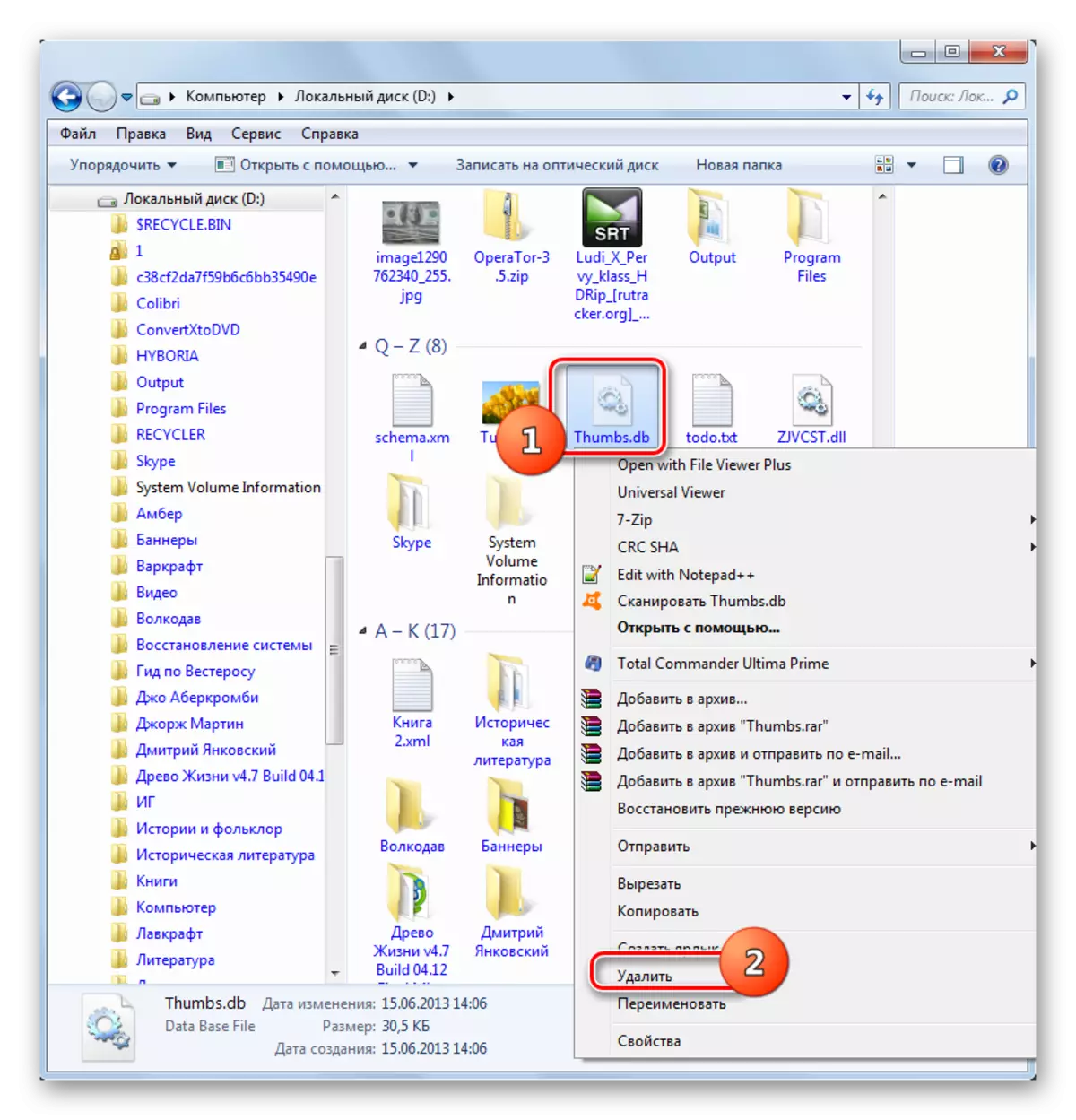
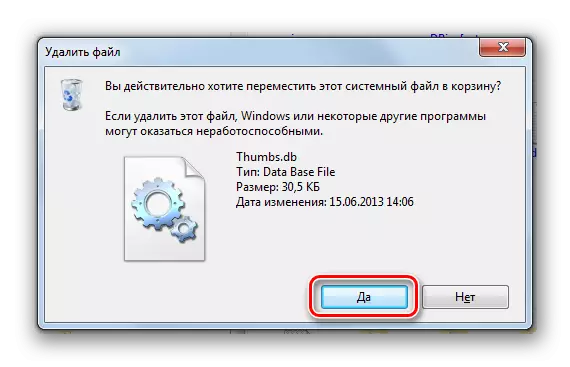
Method 2: Deleting with CCleaner
As you can see, remove the studied items are quite simple. But it is so easy if you have installed OS not previously Windows Vista or you store images only in one folder. If you have Windows XP or earlier, and image files are located in different places on the computer, then the removal of thumbs.db manually can become a very long and tedious procedure. In addition, there are no guarantees that some object you did not missed. Fortunately, there are special utilities that will allow you to clean the cache of images automatically. The user will practically no need to strain. One of the most popular programs of this area is CCleaner.
- Run Cclener. In the "Clearing" section (it is active by default) in the "Windows" tab, find the Windows Explorer unit. It has the parameter "Cash sketches". For cleaning, it is necessary that a check mark was installed opposite this parameter. Talks opposite other parameters to exhibit at their discretion. Click "Analysis".
- The application performs data analysis on a computer that can be deleted, including image sketches.
- After that, the application displays information about which data can be deleted on the computer, and which space is free. Click "Cleaning".
- After completing the cleaning procedure, all data marked in CCleaner will be deleted, including patterns of pictures.
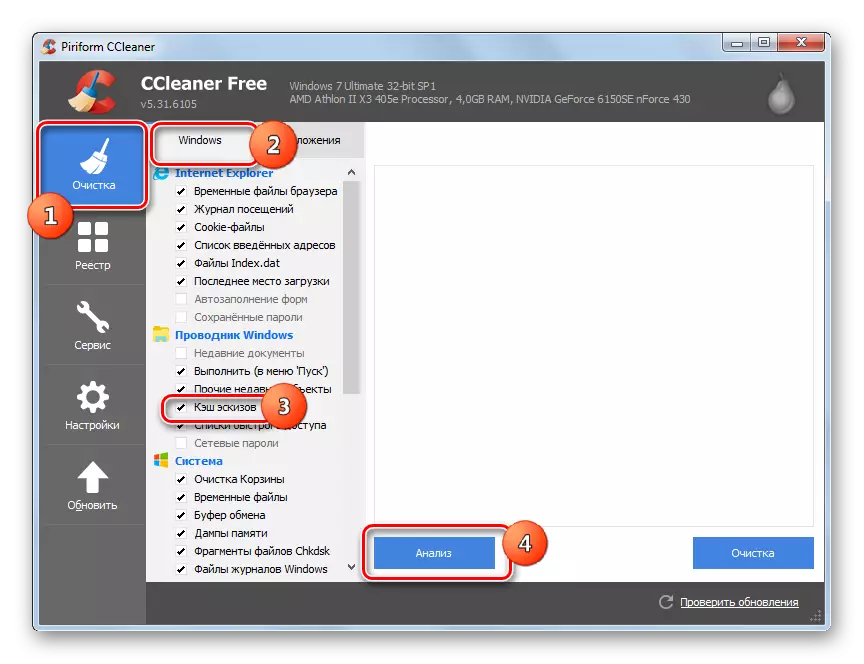
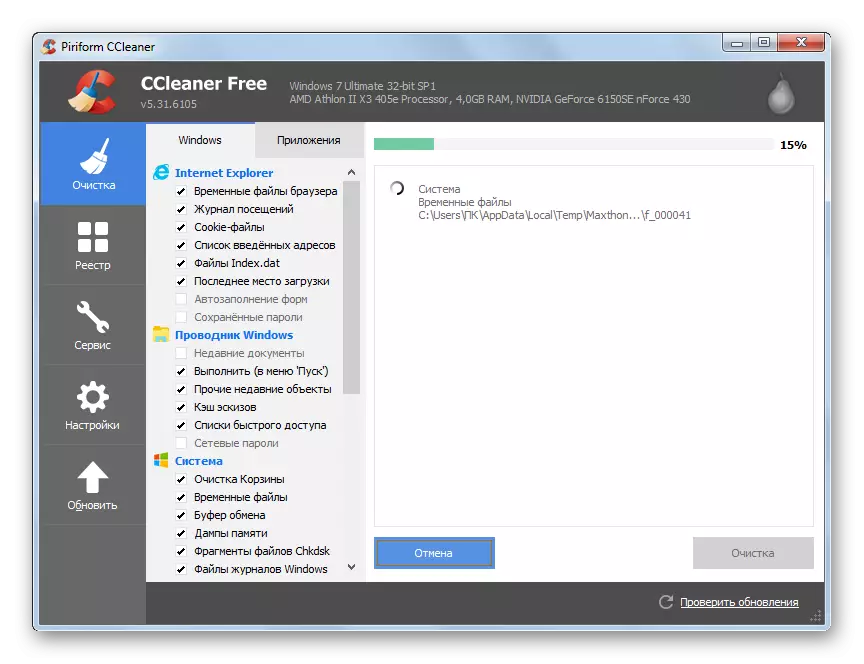
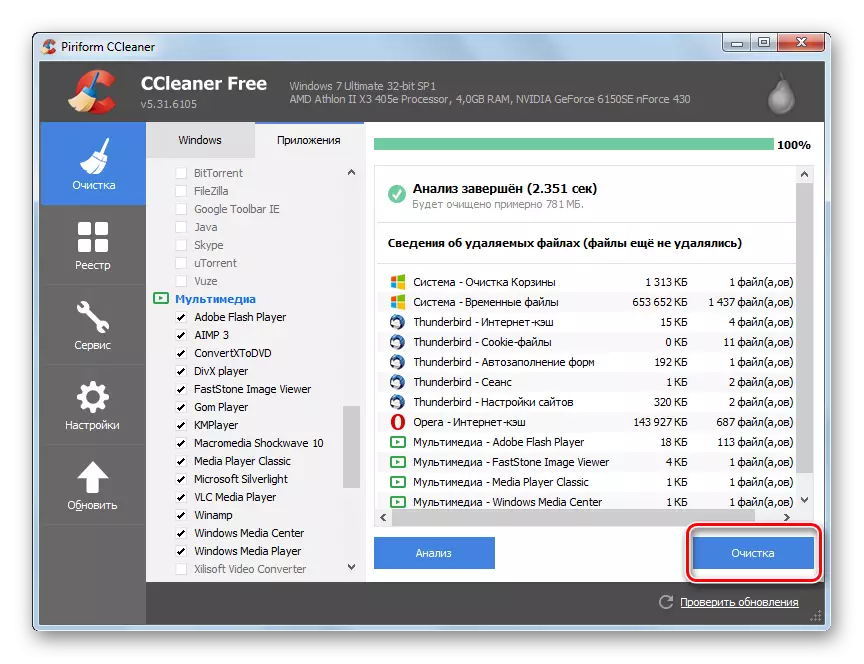
The disadvantage of this method is that on Windows Vista, and the newer search for sketches of pictures is made only in the "Explorer" directory, where their system saves. If the thumbs.db from Windows XP remains on your disks, they will not be found.
Method 3: Thumbnail Database Cleaner
In addition, there are special utilities designed to remove cached miniatures. They are highly specialized, but at the same time allow you to more accurately adjust the removal of unnecessary elements. These applications include Thumbnail Database Cleaner.
Download thumbnail Database Cleaner
- This utility does not require installation. Just run it after downloading. After startup, click on the "Browse" button.
- A selection window opens in which the search will be made thumbs.db. It should select a folder or logical disk. Unfortunately, the ability to check all disks is absent simultaneously on the computer. Therefore, if you have several of them, you will have to produce a procedure with each logical disk separately. After the directory is selected, press "OK".
- Then in the main window utilities click "Start Search".
- Thumbnail Database Cleaner Searches files of thumbs.db, ehthumbs.db (video sketches) and thumbcache_xxxx.db in the specified directory. After that, it gives a list of found items. In the list, you can observe the date when the object was formed, its size and location folder.
- If you want to remove not all cached miniatures, but only some of them, then in the DELETE field, remove the checkboxes from the elements that you want to leave. After that, click "Clean".
- The computer will be cleaned of these items.
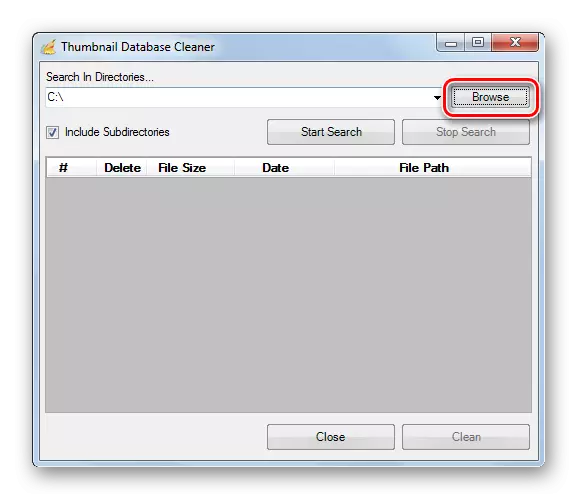
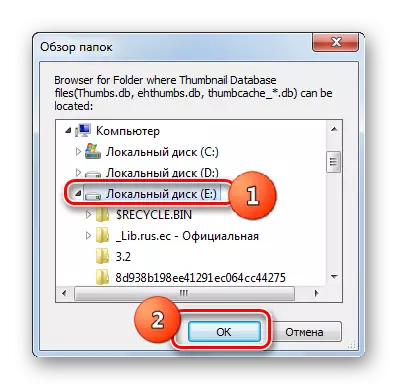
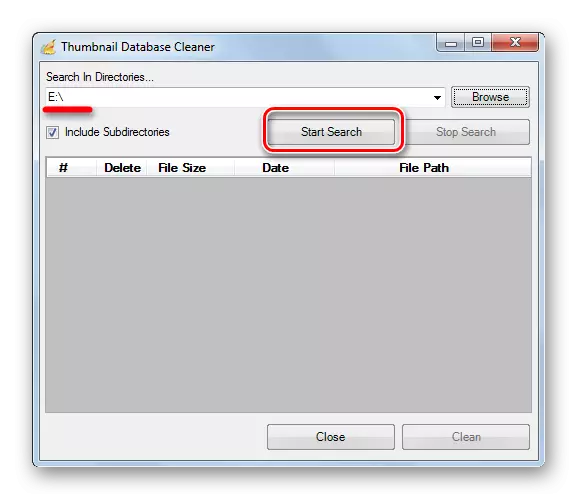
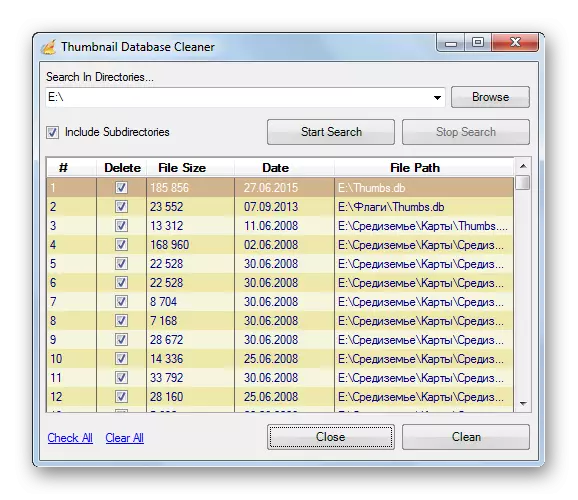
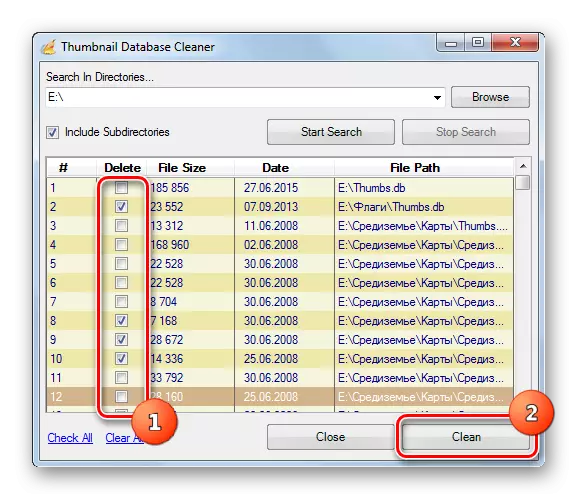
The removal method with the use of the Thumbnail Database Cleaner program is more advanced than when using CCleaner, as it allows to produce a deeper search for cached miniatures (including residual elements from Windows XP), and also provides the ability to select removable items.
Method 4: Built-in Windows Tools
Removing pattern sketches automatically can also be made using built-in Windows tools.
- Click "Start". In the menu, select "Computer".
- A window opens with a list of disks. Click the PCM on the name of that disc on which Windows is located. In the overwhelming majority of cases, this is a C drive. In the list, select "Properties".
- In the properties window in the General tab, click "Cleaning the Disk".
- The system performs a disc scanning, determining which items can be deleted.
- A disk cleaning window opens. In the "Delete the following files" block, check that about the "sketches" clause stood a check mark. If not, install it. Ticks near other items, arrange at your discretion. If you do not want to delete anything anymore, then all of them must be removed. After that click "OK".
- Deleting thumbnails will be performed.
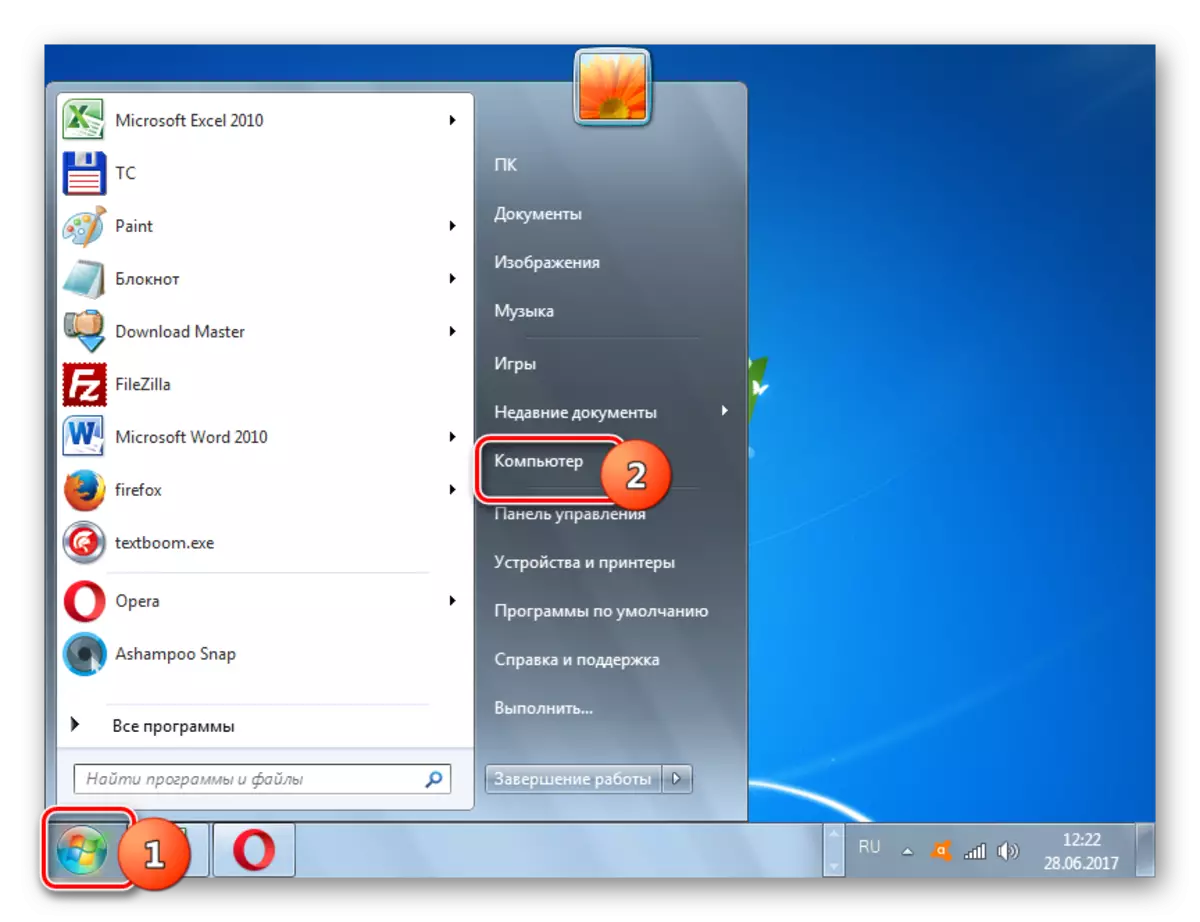
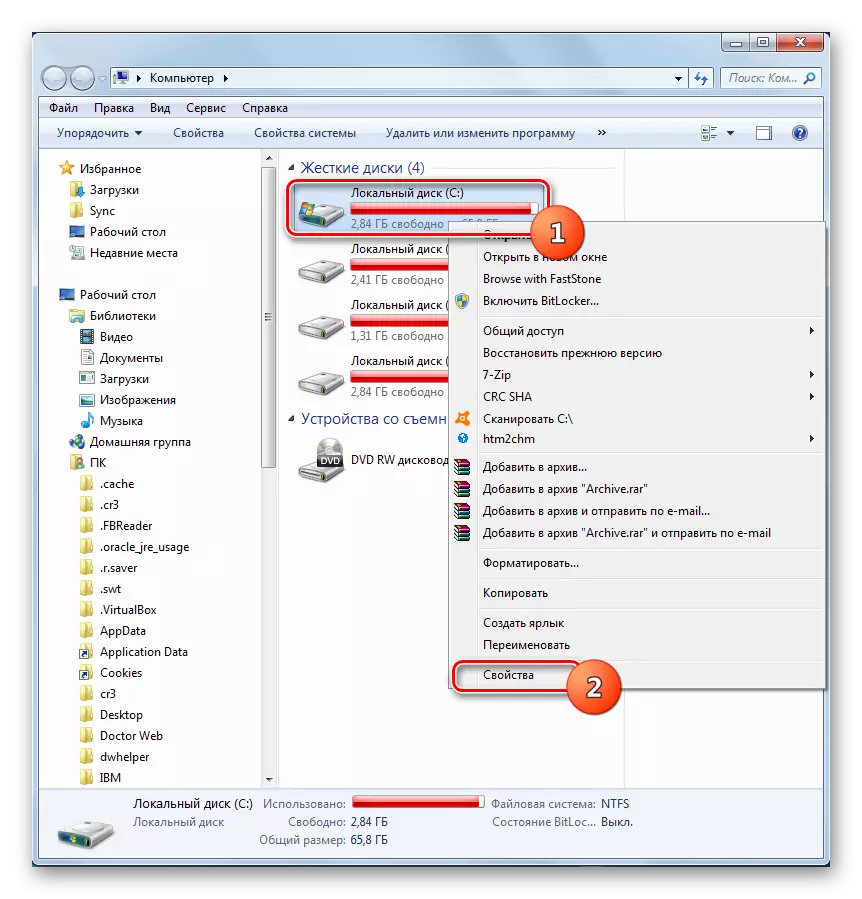
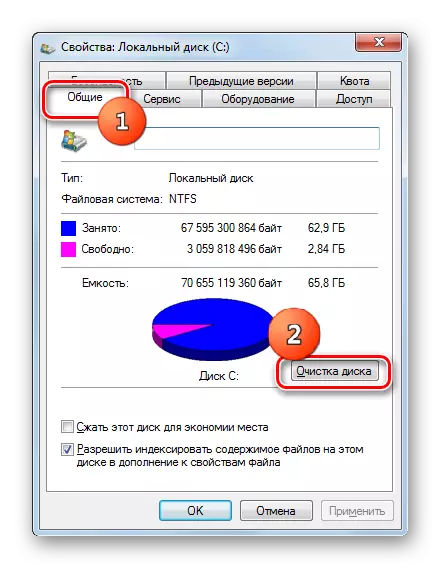
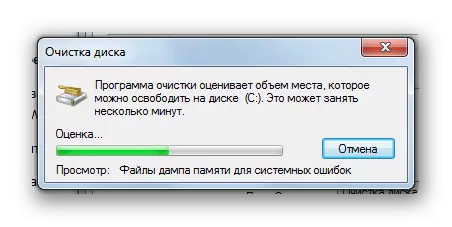
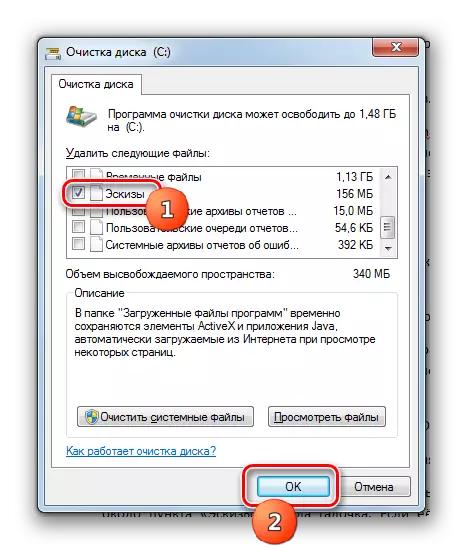
The disadvantage of this method is the same as when using CCleaner. If you are using Windows Vista and later versions, the system thinks that cached miniatures can only be in a strictly installed directory. Therefore, in other Windows XP, residual objects cannot be removed in this way.
Disable caching sketches
Some users who wish to provide maximum confidentiality are not satisfied with the usual cleaning system, but they want to completely turn off the possibility of caching sketches of pictures. Let's see how this can be done on different versions of Windows.Method 1: Windows XP
First of all, briefly consider this procedure on Windows XP.
- You need to move to the folder properties window with the same method that was previously described when we talked about the inclusion of the display of hidden elements.
- After starting the window, move to the View tab. Check the box near the "Do not create sketch file" parameter and click OK.
Now new cached miniatures are formed in the system will not.
Method 2: Modern Windows versions
In those versions of Windows, which were released after Windows XP, disable sketch caching is somewhat more complicated. Consider this procedure using the example of Windows 7. In other modern versions of the system, the disconnect algorithm is similar. First of all, it should be noted that before performing the procedure below described below, you need to possess administrative rights. Therefore, if you are currently in the system at the system not under the administrator account, then you need to get out of it and come back again, but already under the specified profile.
- Dial on the Win + R keyboard. In the "Run" tool window, which will then start, vbo:
gpedit.msc.
Click "OK".
- Local Group Policy Editor window starts. Click on the name "User Configuration".
- Next click "Administrative Templates".
- Then press "Windows Components".
- A large list of components opens. Click the name "Windows Explorer" (or simply "Explorer" - depending on the version of the OS).
- Two times click left mouse button "Disable thumbnail caching in hidden files thumbs.db"
- In the window that opens, rearrange the switch to the "Enable" position. Click "OK".
- Caching will be disabled. If in the future you want to turn it on again, you will need to do the same procedure, but only in the last window to install the switch opposite the parameter "not specified".
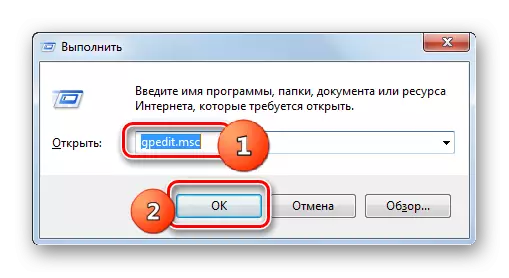
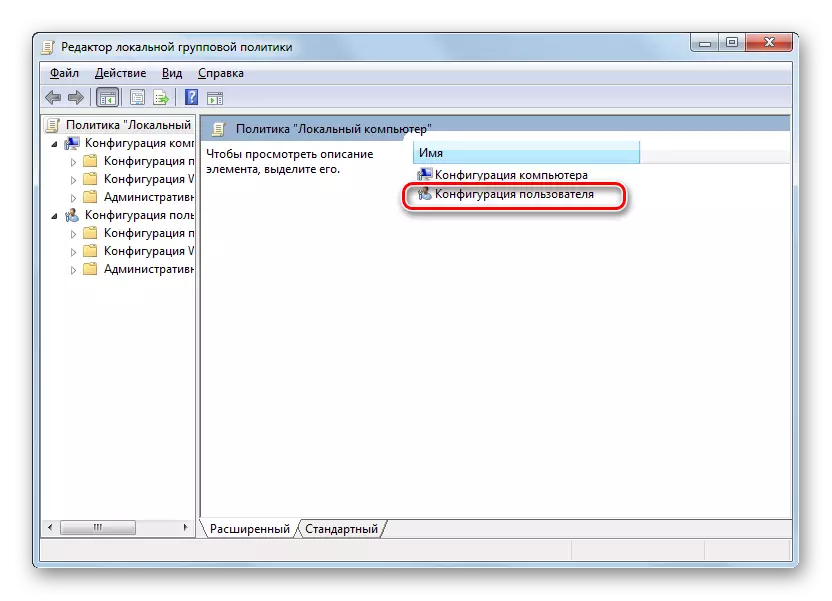
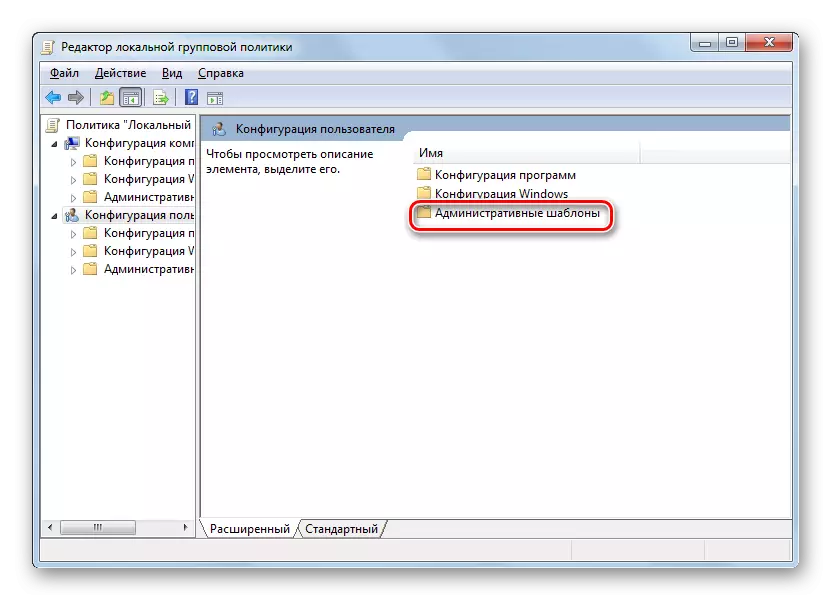
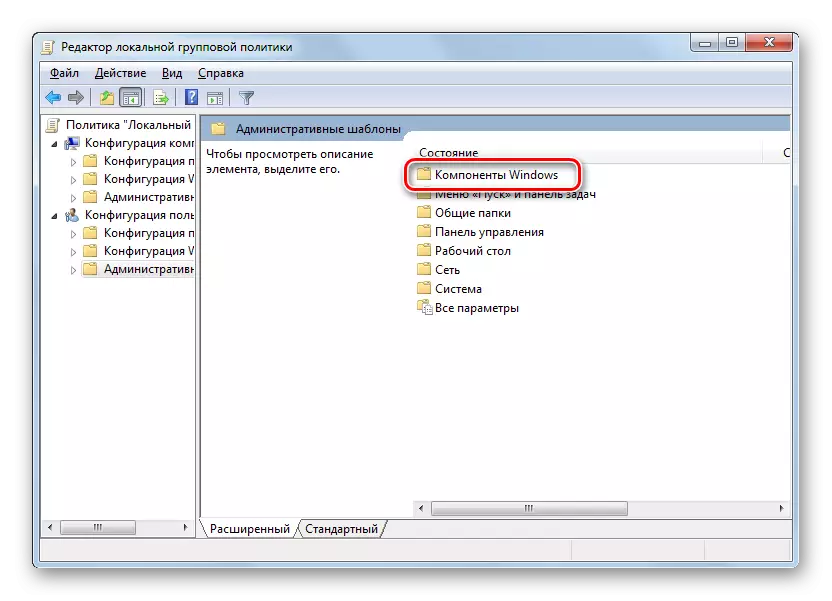
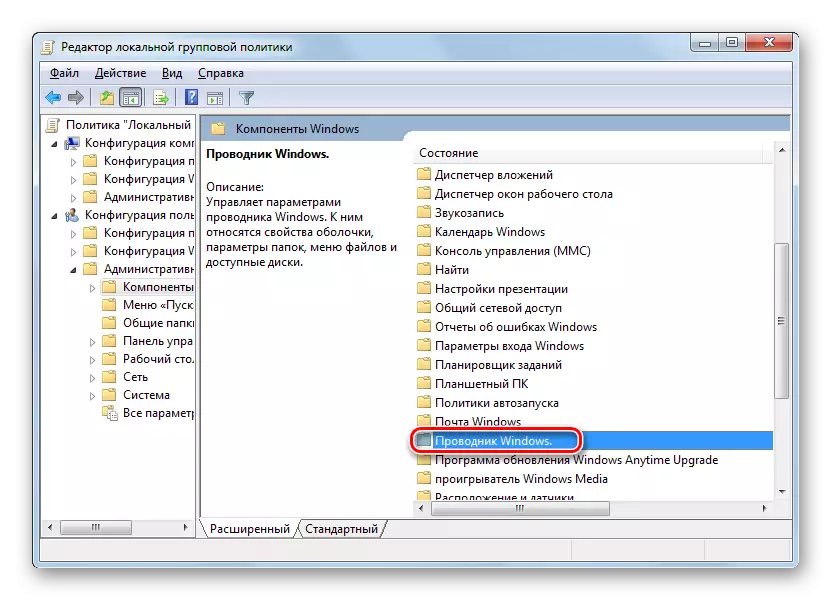
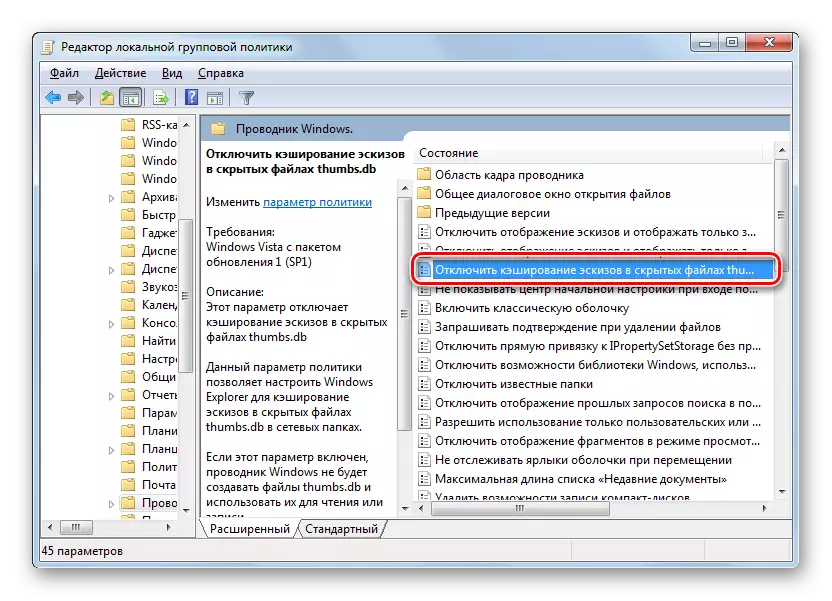
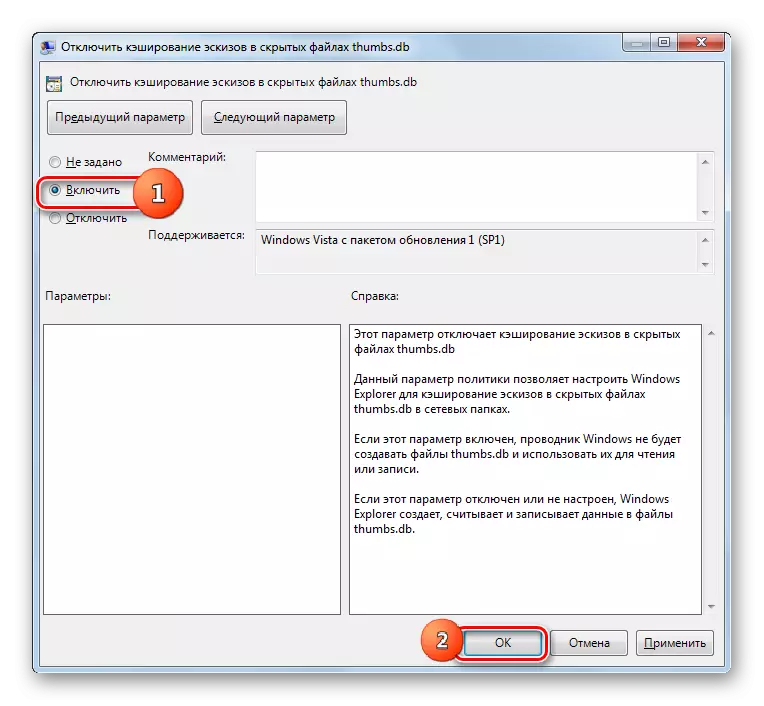
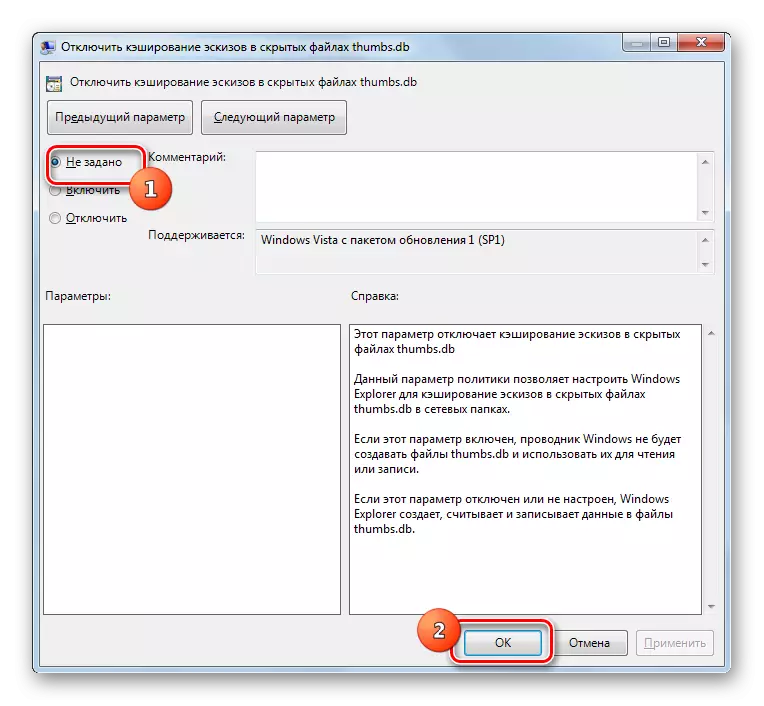
View contents Thumbs.db.
Now we have come to the question, how to view the contents of thumbs.db. Immediately need to say that it is impossible to make embedded system tools. We will have to use third-party software.Method 1: Thumbnail Database Viewer
Such a program that will allow you to view the data from thumbs.db, is Thumbnail Database Viewer. This application of the same manufacturer What and Thumbnail Database Cleaner, and also does not require installation.
Load Thumbnail Database Viewer
- After launching Thumbnail Database Viewer using the navigation area on the left, go to the catalog in which the sketches you are interested in. Make it allocation and click "Search".
- After the search is completed, the addresses of all found in the specified directory of the objects of Thumbs.db are displayed. In order to see what pictures in yourself contain a specific object, just highlight it. On the right side of the program window, all pictures are displayed, the sketches of which it stores.
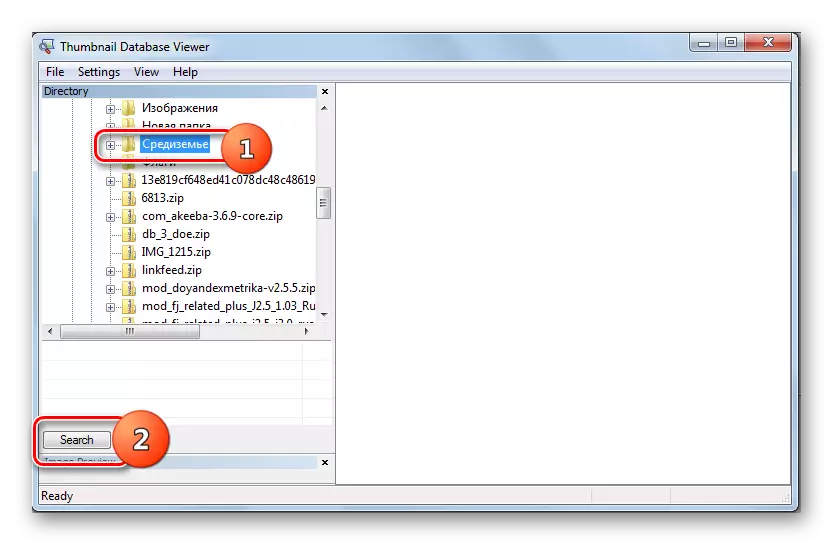
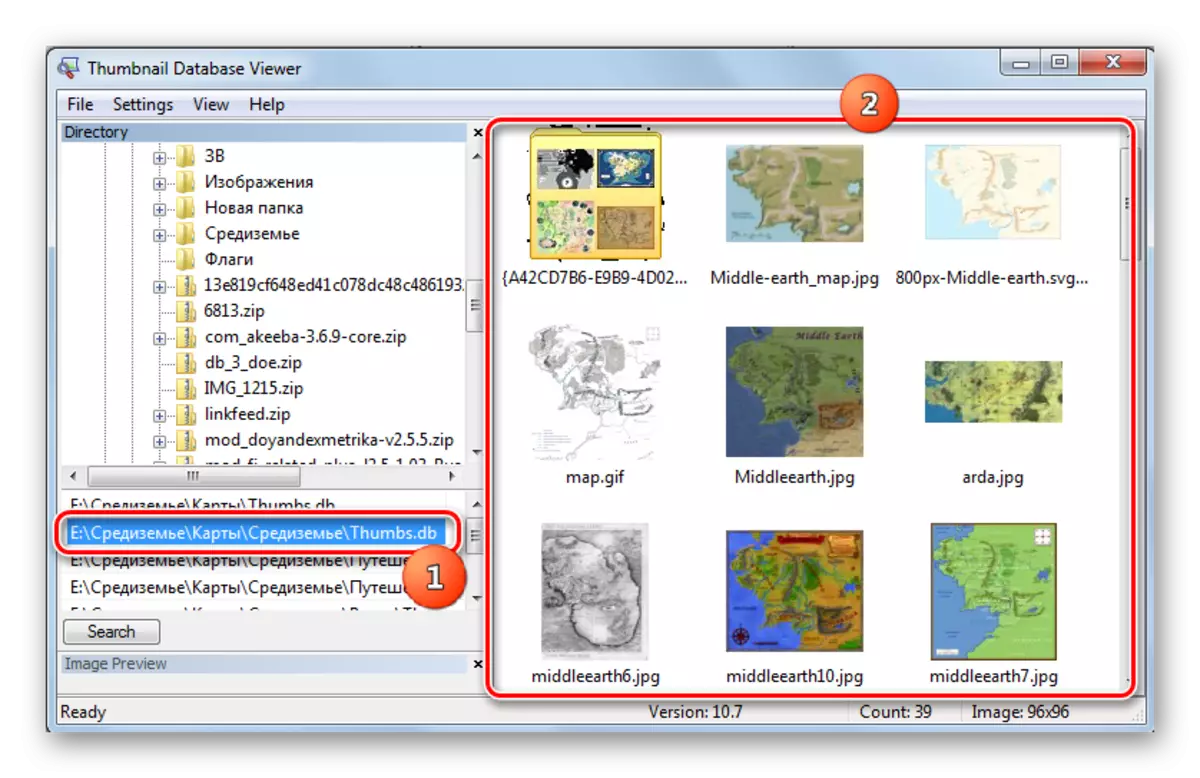
Method 2: Thumbcache Viewer
Another program with which you can view objects of interest to us, is Thumbcache Viewer. True, in contrast to the previous application, it can open not all cached images, but only objects such as thumbcache_xxxx.db, that is, created in the OS, starting with Wist Winds.
Download Thumbcache Viewer
- Run Thumbcache Viewer. Click the menu sequentially by the name "File" and "Open ..." or apply Ctrl + O.
- A window is started, in which you should go to the directory of the location of the desired item. After that, we highlight the object thumbcache_xxxx.db and click "Open".
- A list of images that contain a specific sketch object opens. To view the image, it is enough to simply highlight its name in the list, and it will be displayed in the additional window.
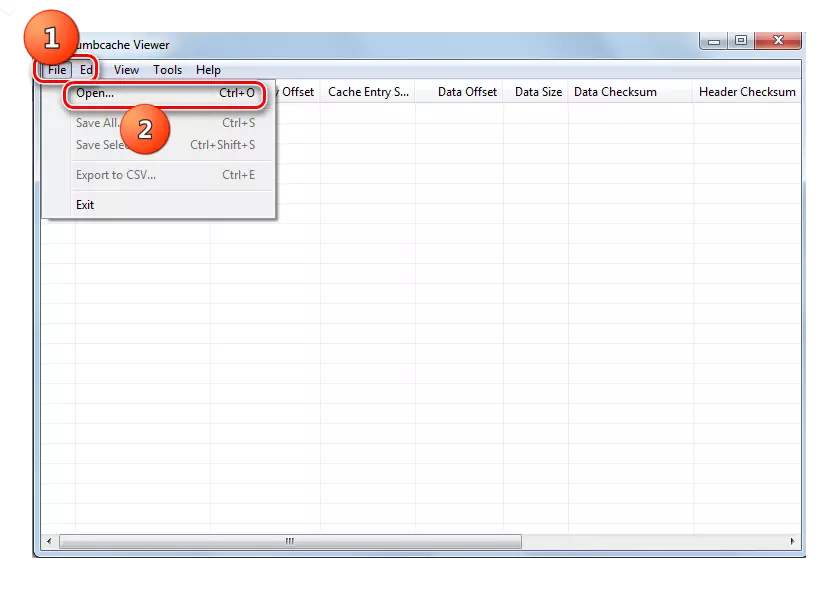
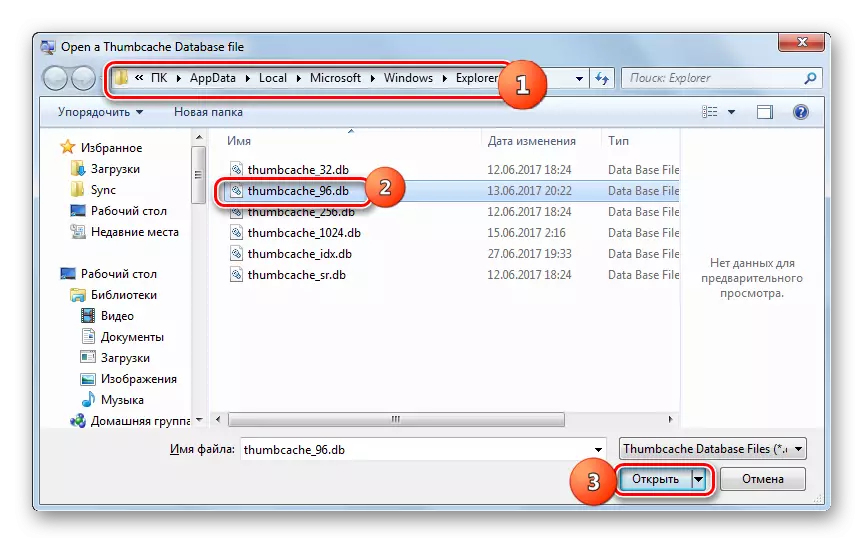
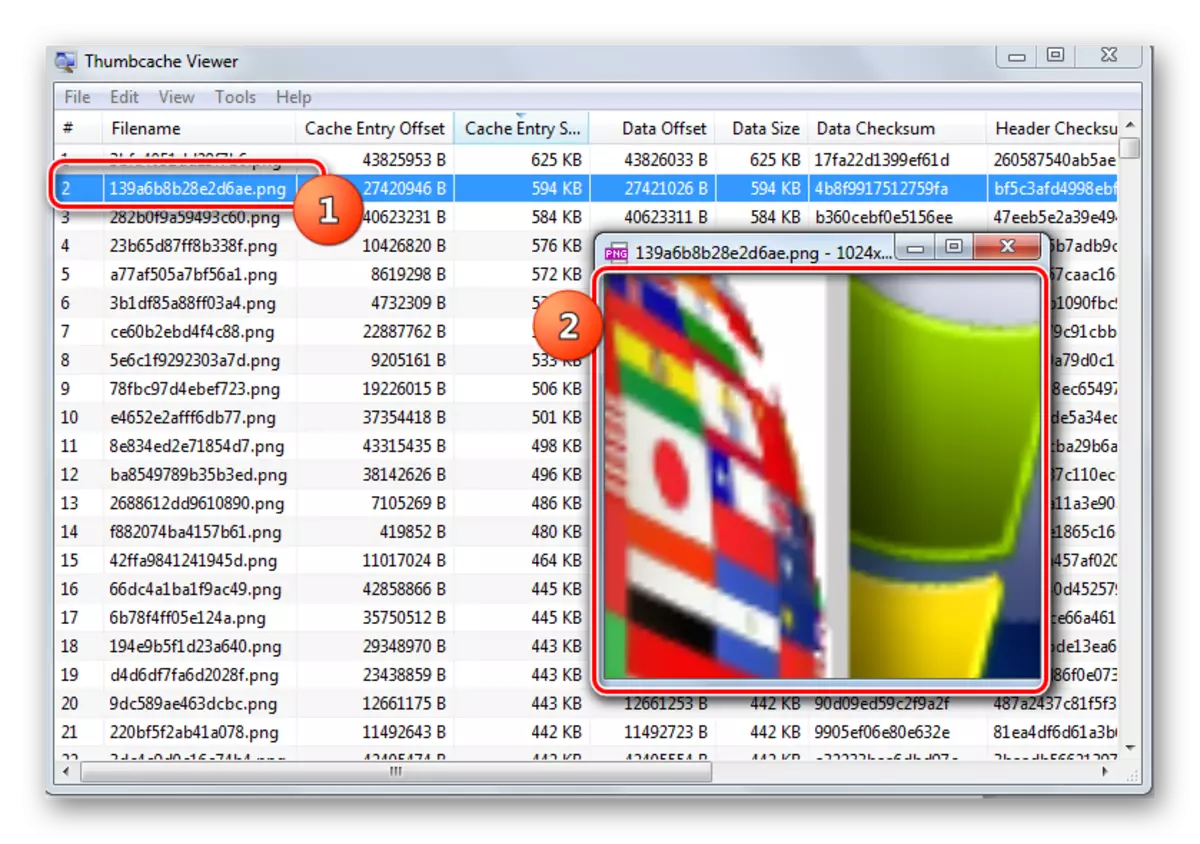
As you can see, the cached miniatures are not hazard, but on the contrary, they contribute to a faster system operation. But they can be used by attackers to obtain information about remote images. Therefore, if you are worried about confidentiality, it is better to periodically clean the computer from cached objects or generally disable caching.
Cleaning the system from these objects can be made both by built-in tools and using specialized applications. The thumbnail Database Cleaner is best coping with this task. In addition, there are several programs that allow you to view the contents of cached sketches.
